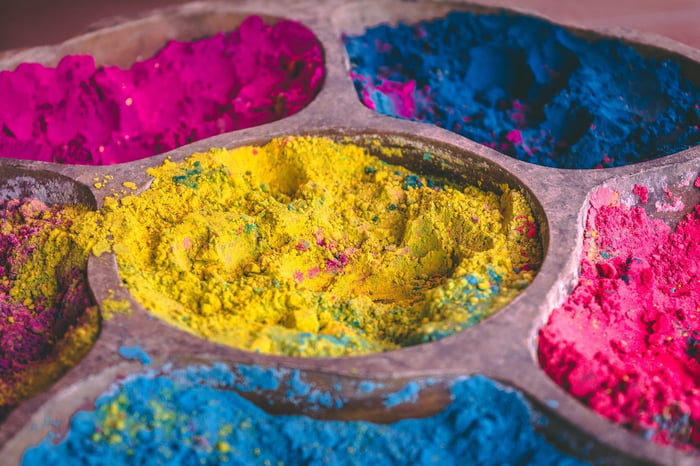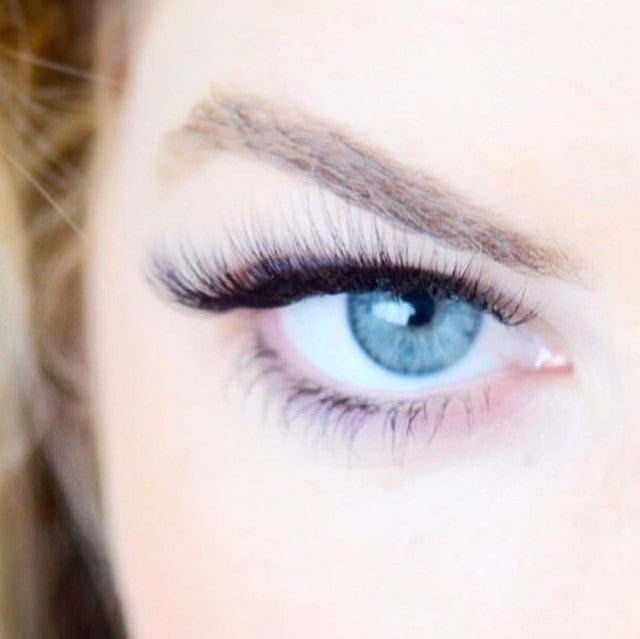Cosmetic Colorants: Hidden Dangers in Your Makeup (2025 Safety Guide)
Are you unknowingly applying toxic cosmetic colorants to your skin every day? With over 12,000 chemicals used in personal care products and minimal safety testing required, understanding harmful makeup ingredients has never been more critical. Recent studies show that the average woman applies 168 chemicals to her skin daily—many through colorants and dyes that could pose serious health risks.
This comprehensive guide reveals everything you need to know about cosmetic colorants and dyes, from identifying dangerous ingredients on labels to choosing safe alternatives that deliver beautiful results without compromising your health.
What You'll Learn:
- Toxic colorants linked to cancer and organ damage
- Safe mineral-based alternatives that actually work
- Hidden animal-derived ingredients in your makeup
- Unethical sourcing issues with popular colorants
- 2025 regulatory updates you need to know
- Clean beauty brand recommendations for safe color cosmetics
The Shocking Truth About Cosmetic Colorant Safety
Unlike food additives, cosmetic colorants face minimal safety testing before hitting store shelves. The FDA has approved only 9 color additives for use in cosmetics applied near the eyes, yet thousands of products contain colorants never tested for long-term safety.
Recent Research Findings:
- Lead contamination found in 99% of tested lipsticks (FDA study, 2024)
- Carcinogenic compounds detected in 78% of colorful makeup products
- Heavy metal exposure from cosmetics exceeds safety thresholds in daily users
- Endocrine disruption linked to synthetic dyes in personal care products
The most concerning fact? These studies examine single-product exposure, not the cumulative effect of using multiple colored cosmetics daily for years.
Understanding Cosmetic Colorants: The Complete Breakdown
Cosmetic colorants fall into three main categories, each with distinct safety profiles and manufacturing processes:
Organic Colorants (Synthetic)
Important: In cosmetics, "organic" means carbon-containing, NOT naturally derived or pesticide-free.
Organic Dyes: Water-soluble colorants synthetically produced from petroleum oil or coal-tar derivatives. These appear on labels with D&C or FD&C prefixes and are frequently contaminated with heavy metals.
Health Risks:
- Lead exposure: Average 0.65 ppm across tested products
- Arsenic contamination: Detected in 32% of D&C colorants
- Cancer concerns: Coal-tar derivatives classified as possible carcinogens
- Neurological effects: Heavy metal accumulation affects cognitive function
Organic Pigments: Oil-dispersible colorants derived from FD&C dyes. While more stable than dyes, they carry similar contamination risks and toxicity concerns.
Inorganic Colorants (Mineral-Based)
Derived from naturally occurring mineral compounds like iron oxides, zinc oxide, and titanium dioxide. These undergo purification to remove naturally occurring heavy metals.
Safety Profile:
- No adverse health effects reported in decades of use
- Non-allergenic for most skin types
- Stable formulation that doesn't degrade over time
- Environmentally safe with minimal ecological impact
Natural Plant-Based Colorants
Extracted from fruits, vegetables, and plant materials like beets, cherries, turmeric, and spirulina.
Pros and Cons:
- ✅ Truly natural and biodegradable
- ✅ Rich in antioxidants that may benefit skin
- ❌ Limited color range compared to synthetic options
- ❌ Stability issues - colors may fade or shift over time
- ❌ Potential allergens for sensitive individuals
Toxic Cosmetic Colorants to Avoid (2025 Updated List)
These dangerous cosmetic ingredients have been linked to serious health concerns through peer-reviewed research and regulatory warnings:
1. Carbon Black (CI 77266)
Classification: Possible human carcinogen by the International Agency for Research on Cancer (IARC)
Found In: Mascaras, eyeliners, eyeshadows, brow products, lash extension adhesives
Health Risks:
- Respiratory issues when particles become airborne
- Skin irritation and inflammatory responses
- Potential cancer risk with long-term exposure
- Eye damage when used in eye-area products
FDA Status: Banned for use in eye-area cosmetics, yet still found in products
Label Names: CI 77266, Black No. 2 D&C, Carbon Black
2. FD&C and D&C Synthetic Dyes
Source: Coal-tar derivatives processed with industrial chemicals
Contamination Concerns:
- Lead levels: Up to 20 ppm in some products (FDA allows 10 ppm)
- Arsenic detection: Found in Red 3, Yellow 5, and Blue 1
- Mercury traces: Occasional contamination in older formulations
- Chromium compounds: Linked to skin sensitization
Most Problematic Dyes:
- FD&C Yellow No. 5 (Tartrazine): Linked to ADHD and allergic reactions
- FD&C Red No. 40: Contains benzidine, a known carcinogen
- D&C Red No. 3: Shown to cause thyroid tumors in animal studies
- FD&C Blue No. 1: Associated with chromosomal damage
2025 Regulatory Update: The EU has banned 27 additional coal-tar dyes, while the US continues to allow most with "acceptable limits" of contamination.
3. Lake Pigments (High-Risk Varieties)
What They Are: Water-insoluble forms of FD&C dyes created by precipitating dyes onto aluminum, barium, or calcium substrates.
Dangerous Lake Pigments to Avoid:
- Red 6 Lake (CI 15850): Benzidine contamination risk
- Red 7 Lake (CI 15850): Heavy metal accumulation
- Yellow 5 Lake (CI 19140): ADHD and behavioral concerns
- Blue 1 Lake (CI 42090): Chromosomal damage in studies
- Orange 5 Lake (CI 45370): Skin sensitization and irritation
4. Resorcinol
Primary Use: Hair dyes and color-changing cosmetics
Health Concerns:
- Endocrine disruption: Interferes with thyroid function
- Skin sensitization: High rates of allergic contact dermatitis
- Reproductive toxicity: Animal studies show developmental effects
- Organ system toxicity: Particularly affects liver and kidneys
Label Names: Resorcinol, 1,3-benzenediol, resorcin, m-dihydroxybenzene
5. Para-Phenylenediamine (PPD)
Found In: Dark-colored cosmetics, especially black and brown products
Severe Risks:
- Contact dermatitis: Causes severe allergic reactions in 4% of population
- Respiratory sensitization: Can trigger asthma and breathing difficulties
- Genetic damage: Mutagenic properties documented in laboratory studies
Animal-Derived Colorants: Hidden Ingredients in Your Makeup
Many consumers unknowingly use animal-derived cosmetic ingredients. Here's what to watch for:
Carmine (Cochineal Extract)
Source: Crushed female cochineal insects (approximately 70,000 insects per pound of carmine)
Found In: Red lipsticks, blushes, nail polishes, red eyeshadows
Issues:
- Not vegan/vegetarian friendly
- Allergic reactions in sensitive individuals
- Religious dietary restrictions for some consumers
Label Names: Carminic Acid, Cochineal Extract, CI 75470, E120, Natural Red 4, Crimson Lake
Guanine (Fish Scale Extract)
Source: Fish scales, particularly from herring and sardines
Purpose: Creates iridescent, pearlescent effects in cosmetics
Found In: Shimmery eyeshadows, nail polishes, lip glosses, highlighters
Label Names: Pearl Essence, CI 75170, Natural Pearl
Unethical Colorant Sourcing: The Dark Side of Beauty
Mica and Child Labor
The Problem: An estimated 22,000 children work in mica mines in India, many in dangerous conditions without safety equipment.
Health Risks for Children:
- Respiratory diseases from silica dust exposure
- Physical injuries from unsafe mining practices
- Educational deprivation affecting long-term development
Solution: Synthetic mica (Synthetic Fluorphlogopite) provides identical cosmetic properties without ethical concerns.
Brands Using Ethical Mica:
- Certified child-labor-free supply chains
- Synthetic alternatives
- Responsible Mica Initiative participants
Label Identification:
- Avoid: Mica, CI 77019, Potassium Aluminum Silicate
- Choose: Synthetic Fluorphlogopite, Lab-Created Mica
Safe Cosmetic Colorants: What to Look For
Iron Oxides: The Gold Standard
Types and Colors:
- CI 77491 (Red Iron Oxide): Browns, reds, warm tones
- CI 77492 (Yellow Iron Oxide): Yellows, golds, warm neutrals
- CI 77499 (Black Iron Oxide): Blacks, deep browns, dramatic looks
Safety Profile:
- GRAS status (Generally Recognized as Safe) by FDA
- No known adverse effects in 50+ years of cosmetic use
- Non-comedogenic won't clog pores
- Stable formulation maintains color integrity
Titanium Dioxide (CI 77891)
Benefits:
- Broad-spectrum UV protection (natural SPF 2-4)
- Brightening effect for complexion products
- Opacity control for coverage and pigmentation
- Anti-inflammatory properties soothe sensitive skin
Zinc Oxide
Dual Function:
- Natural sun protection (physical UV blocker)
- White pigment for lightening and coverage
- Antimicrobial properties help prevent product contamination
- Gentle for sensitive skin including around eyes
Permanent Makeup and Injectable Colorants: Special Considerations
FDA Regulatory Gap
Critical Fact: No cosmetic colorants are FDA-approved for injection or implantation under the skin, including:
- Microblading pigments
- Permanent makeup inks
- Cosmetic tattoo dyes
- Semi-permanent lip color
Unique Health Risks
Heavy Metal Contamination:
- Lead levels up to 65 times higher than topical cosmetics
- Cadmium, chromium, and mercury frequently detected
- Nickel sensitivity causing delayed allergic reactions
MRI Complications:
- Severe burns reported during magnetic resonance imaging
- Image distortion from metallic particles in skin
- Infection risk from contaminated pigments
Safer Options by Country
Highest Safety Standards:
- Germany: Strictest heavy metal limits (0.1 ppm for most metals)
- Spain: Comprehensive banned substance list (1,300+ chemicals)
- France: Mandatory pre-market safety testing
- Switzerland: Advanced purification requirements
Questions to Ask Your Artist:
- What country are your pigments manufactured in?
- Can you provide ingredient lists for all colors?
- Do you have third-party contamination testing results?
- Are your pigments Council of Europe compliant?
How to Read Cosmetic Labels Like a Pro
Red Flag Ingredients
Immediate Avoid List:
- Any ingredient starting with FD&C or D&C
- CI numbers followed by synthetic dye names
- Coal tar dyes in any form
- Lake pigments (except iron oxide lakes)
- Carbon black or CI 77266
Safe Ingredient Indicators
Look For:
- Iron oxides (CI 77491, 77492, 77499)
- Titanium dioxide (CI 77891)
- Zinc oxide
- Plant-derived colorants (when stability isn't crucial)
- Synthetic fluorphlogopite (ethical mica alternative)
Brand Transparency Signals
Trustworthy Brands:
- Publish complete ingredient lists online
- Provide contamination testing results
- Offer third-party safety certifications
- Maintain supply chain transparency
- Support responsible sourcing initiatives
The Plume Science Approach: Clean Color That Works
Our Colorant Philosophy
Every colorant in our formulations meets strict criteria:
- Mineral-based origins with documented safety profiles
- Heavy metal testing below detectable limits
- No animal-derived ingredients (transitioning honey-containing products to vegan)
- Ethical sourcing from suppliers with transparent practices
- Performance excellence without compromising safety
Our Approved Colorant List
Iron Oxides (CI 77491, 77492, 77499):
- Sourced from leading European suppliers
- Tested for heavy metal contamination
- Processed to pharmaceutical-grade purity
- Perfect for sensitive eye-area use
Titanium Dioxide (CI 77891):
- Uncoated, non-nano particles
- Natural UV protection benefits
- Ideal for brightening formulations
- Gentle enough for daily use
Why We Never Use:
- FD&C or D&C synthetic dyes
- Coal-tar derived colorants
- Animal-derived pigments
- Ethically questionable ingredients
- Untested novel colorants
Frequently Asked Questions About Cosmetic Colorants
Are natural colorants always safer than synthetic ones?
Not necessarily. While many plant-derived colorants are safe, some can cause allergic reactions or skin sensitization. Additionally, "natural" doesn't guarantee safety—poison ivy is natural but certainly not safe for skin contact. The key is choosing colorants with established safety data, whether natural or synthetic.
What's the difference between dyes and pigments?
Dyes are water-soluble and penetrate skin cells, while pigments are oil-dispersible particles that sit on the skin's surface. Pigments are generally considered safer because they don't absorb into the skin, making iron oxide pigments ideal for cosmetic use.
How can I tell if my makeup contains toxic colorants?
Check the ingredient list for FD&C or D&C prefixes, CI numbers associated with synthetic dyes, and coal-tar derivatives. When in doubt, research specific ingredients on the EWG Skin Deep database or contact the manufacturer for contamination testing data.
Are expensive makeup brands safer when it comes to colorants?
Price doesn't guarantee safety. Some luxury brands still use questionable colorants for vibrant colors, while some affordable brands focus on clean ingredients. Always check ingredients rather than relying on price or marketing claims.
What should I do if I react to colorants in makeup?
Discontinue use immediately and consult a dermatologist. Keep the product for patch testing to identify the specific allergen. Consider switching to mineral-based cosmetics with simpler ingredient lists to minimize reaction risk.
Is it safe to use makeup with FD&C dyes occasionally?
While occasional use may not cause immediate harm, heavy metals accumulate in the body over time. Given the availability of safe alternatives, many experts recommend avoiding these ingredients entirely, especially for daily-use products.
Clean Beauty Brand Recommendations (2025)
Best Clean Makeup Brands for Safe Colorants:
Premium Options:
- Plume Science - Medical-grade formulas, iron oxide only
- Beautycounter - Strict banned ingredient list
- Ilia Beauty - Clean, high-performance color
- RMS Beauty - Organic, minimally processed ingredients
Budget-Friendly:
- Honest Beauty - Clean drugstore option
- Pacifica - Vegan, cruelty-free formulas
- ** 100% Pure** - Plant-pigmented cosmetics
- Mineral Fusion - Affordable mineral makeup
What to Look for in Clean Color Brands:
✅ Transparent ingredient sourcing
✅ Third-party safety testing
✅ Comprehensive banned ingredient lists
✅ Sustainable packaging options
✅ Cruelty-free certifications
✅ Positive customer safety track record
The Bottom Line: Your Health Is Worth It
The cosmetics industry has made incredible advances in safe colorant technology. Today's mineral-based formulations deliver stunning color payoff without compromising your health or values. With iron oxides, titanium dioxide, and ethically-sourced alternatives readily available, there's simply no reason to expose yourself to potentially harmful synthetic dyes.
Take Action Today:
- Audit your current makeup collection for toxic colorants
- Replace high-use products first (foundation, daily lipstick, mascara)
- Research new purchases before buying
- Support brands prioritizing safety and transparency
- Share this information with friends and family
Remember: beautiful, vibrant makeup and personal safety aren't mutually exclusive. By choosing clean cosmetic colorants, you're investing in both your immediate beauty goals and long-term health.
Ready to make the switch to safer cosmetics? Start with our Plume Science collection, formulated exclusively with the safest, most effective colorants available. Every product is rigorously tested and transparent about ingredients—because you deserve both beauty and peace of mind.
Have questions about specific ingredients in your makeup collection? Leave a comment below or reach out on Instagram @plumescience for personalized advice from our team! #CleanBeauty #SafeCosmetics #PluminatiCommunity
Related Articles:
- 8 Reasons Your Eyebrows Won't Grow (And How to Fix Them)
- The Truth About Lash Extensions: Safety Guide
- Hidden Hormones in Your Lash Serum
- Top 8 Toxins in Your Brow Product




